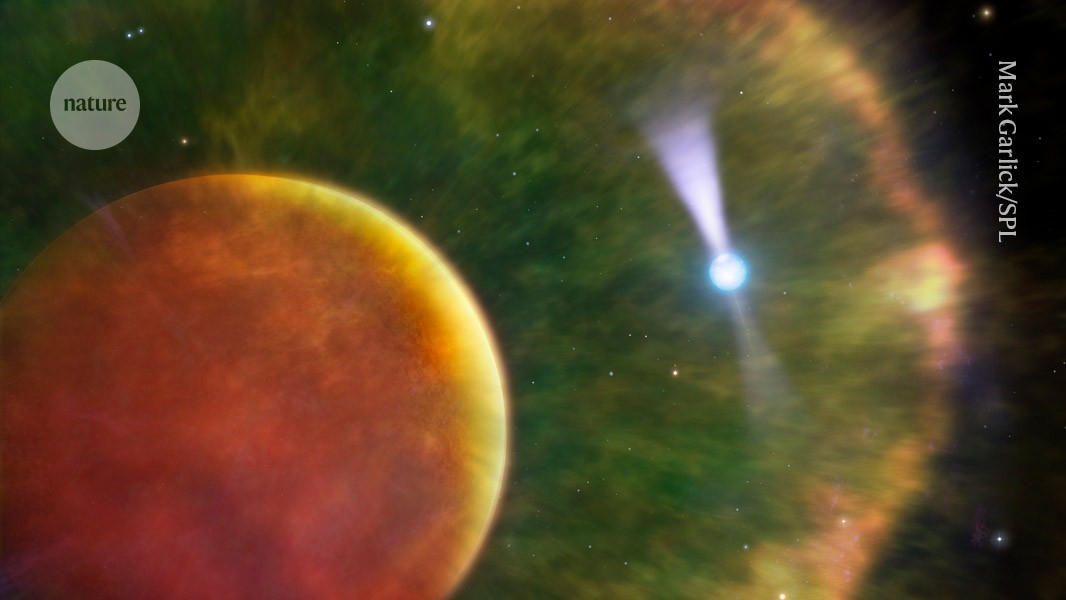Rare ‘spider star’ spotted consuming its companion

A spinning neutron star orbits the remnants of a once-massive companion it has stripped to its core

An illustration of a ‘black widow’ pulsar (right) with its brown dwarf companion star (left).Credit: Mark Garlick/Science Photo Library
Astronomers at the world’s largest telescope have found hints of a ‘missing link’ in the evolution of two binary stars that are tightly orbiting one another. It is a long-theorized type of system in which a rapidly spinning neutron star called a pulsar — the remnants of a massive supernova — is engulfed into its larger companion, then stripped it to its core.
The neutron star is a rare example of a ‘spider pulsar’ — one that consumes the material around a companion star, or causes it to scatter away by emitting powerful beams of radio waves. The detection, described on 22 May in Science1, sheds light on processes that give rise to the spectacular mergers seen by gravitational-wave observatories — involving two neutron stars, two black holes, or one of each.
Jin-Lin Han, the leading radio astronomer at the National Astronomical Observatories in Beijing, says that this particular pulsar caught his attention because the radio signals it emitted showed that it orbited a companion every 3.5 hours — but also disappeared for about one-sixth of that time, suggesting that the pulsar orbited behind another star,itself hidden by galactic dust.
Han and his collaborators watched the star repeatedly over four and a half years — including three extended observations that covered the full orbit of the system — using the Five-hundred-meter Aperture Spherical Radio Telescope (FAST) in the Guizhou province of southern China, the most powerful radio dish ever built.
Enjoying our latest content?
Login or create an account to continue
- Access the most recent journalism from Nature's award-winning team
- Explore the latest features & opinion covering groundbreaking research
or
Sign in or create an accountdoi: https://doi.org/10.1038/d41586-025-01633-8
This story originally appeared on: Nature - Author:Davide Castelvecchi


















